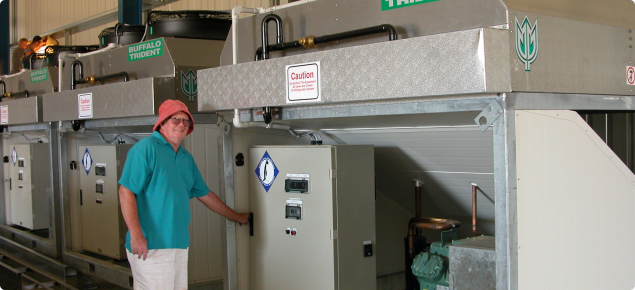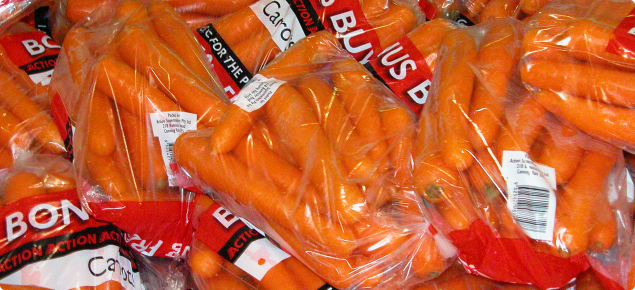Growing condition effects
A balanced nutritional program is important to producing a high quality root with good keeping qualities. Ideally the crop will have run low on nitrogen in the week or two prior to harvest in order to reduce the risk of postharvest bacterial breakdown.
If irrigation is reduced close to harvest in an effort to dry out the soil to minimise the sand or soil that is lifted with the crop, it is most important that the roots don’t begin to desiccate.
Carrots grown for market usually remain in the vegetative phase. This contrasts with most fruit and many vegetables (for example, broccoli) that reach a defined and measurable maturity. Nantes carrots can be considered 'mature' when the root tips have filled, reaching the typical blunt-ended appearance.
Root size usually determines when carrots are harvested. It is important that yield and packout of the market-preferred sizes are optimised to maximise returns. Harvesting early to fill orders will sometimes mean that yields and hence profits are reduced. If harvest is delayed it is important that foliage diseases are managed and the level of root diseases is monitored to ensure serious crop losses are avoided.
Risk of bacterial breakdown is much higher in carrots harvested during hot weather. At these times, harvest during cool parts of the day.
Harvesting early in the morning will reduce dehydration and time for carrots to cool down. High temperatures accelerate the growth of disease-causing fungi and bacteria.
- In cold wet weather, splitting and breakage can cause serious losses particularly in susceptible varieties. In general, Imperator varieties are less prone to breakage than Nantes varieties, which are generally less susceptible to breakage than Kuroda.
- Harvest into clean bins and crates. This will minimise the spread of disease.
- Minimise the drop height. Excessive drop heights lead to more bruising, splitting and breakage. Adjust machinery in the field and on the packing line to lower the drop height. Carrots dropped at the beginning of the packing line should have some padding to eliminate bruises, cracks and abrasions that serve as entry points for decay-causing fungi and bacteria.
- Transport carrots carefully - avoid excessive bouncing and shaking in bins to reduce bruising and splitting. In hot weather, cover the carrots with a tarpaulin during transport.
- Never keep harvested carrots in the sun. Shading will reduce dehydration. Heated carrots lose quality and dehydrate more quickly.
- Coolstore carrots immediately after washing them. Where carrots are hydro-cooled after washing, they can be packed and then coolstored immediately. This greatly reduces the risk of postharvest diseases.
- Chlorination (50 to 100 parts per million available chlorine and water pH 7.0 to 7.6) is only recommended if carrot breakdown is observed. It is likely that management practices in the field, and weather conditions predispose carrots to bacterial soft rot. Washing water should be changed as often as practical.


